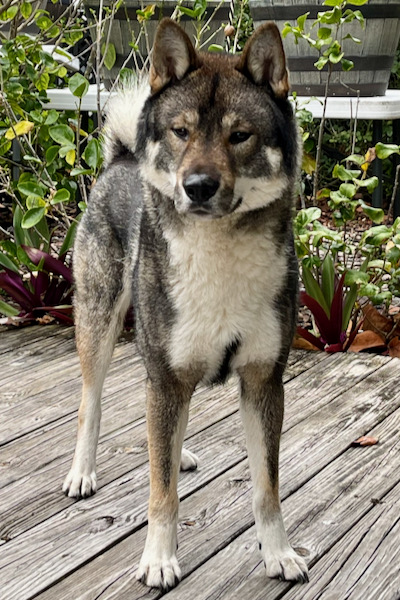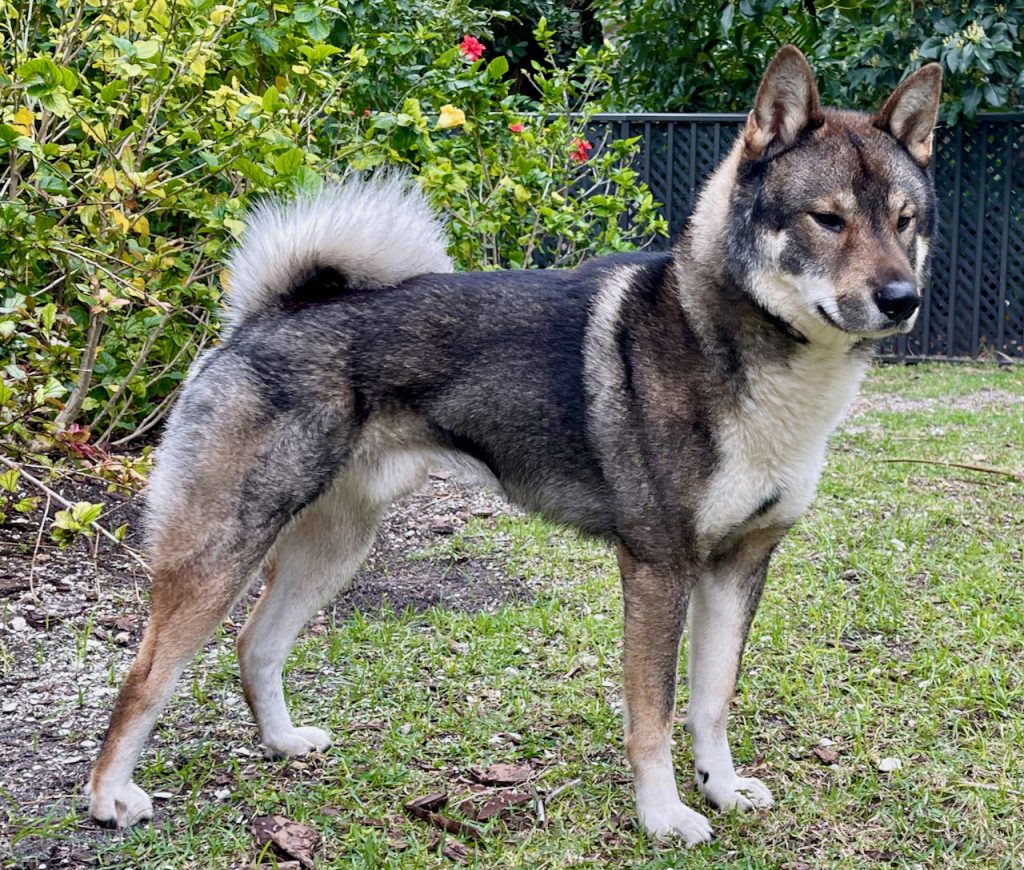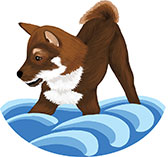
The FCI Standard for the Shikoku
ORIGIN: Japan.
UTILIZATION: Hunting dog, companion.
FCI-CLASSIFICATION: Group 5 Spitz and primitive type. Section 5 Asian Spitz and related breeds. Without working trial.
BRIEF HISTORICAL SUMMARY: This breed goes back to medium-sized dogs that existed in Japan in ancient times. The Shikoku was bred as a hunting dog, mainly for hunting boar in the mountainous districts of Kochi Prefecture. It is sometimes called « Kochi-ken » (ken = dog). There were three varieties of this breed Awa, Hongawa and Hata-all named after the area where they were bred. Among them, the Hongawa maintained the highest degree of purity, because the breeding area was not easily accessible. These dogs are tough and sufficiently agile to run through a montainous region. They are characterized by their sesame coloured coats. The breed took on the name of the region and was designated as a « natural monument » in 1937.
GENERAL APPEARANCE: A medium-sized dog with well balanced and well developed clean cut muscles. It has pricked ears and a curled or sickle tail. Conformation : strong, well-boned and compact.
IMPORTANT PROPORTIONS: The ratio of height at withers to length of body is 10 : 11
BEHAVIOUR / TEMPERAMENT: A dog of marked endurance, keen in sense with a naive feeling, energetic and highly alert; an enthusiastic hunter; docile towards his master.
HEAD
CRANIAL REGION:
Skull: Forehead broad.
Stop: Shallow, but defined.
FACIAL REGION:
Nose: Black.
Muzzle: Rather long, wedge-shaped. Nasal bridge straight.
Lips: Tight.
Jaws/Teeth: Teeth strong, with a scissor bite.
Cheeks: Well developed.
Eyes: Nearly triangular, not too small, and dark brown in colour. The outer corners of the eyes are slightly upturned.
Ears: Small, triangular, slightly inclining forward and firmly pricked.
NECK: Thick and powerful.
BODY
Withers: High, well developed.
Back: Straight and strong.
Loin: Broad and muscular.
Chest: Deep, ribs well sprung.
Belly: Slightly tucked up.
TAIL: Set on high, thick and carried over the back vigorously curled or curved like a sickle. The tip nearly reaches the hocks when let down.
LIMBS
FOREQUARTERS:
Shoulders: Moderately sloping with developed muscles.
Upper arm: Forming a moderate angle with shoulder blade.
Elbow: Set close to the body.
Forearm: Straight and clean cut.
Metacarpus (Pastern): Slightly oblique feet: Tightly closed with well arched toes. Pads thick and elastic. Nails hard and black or dark in colour.
HINDQUARTERS:
General appearance: Powerful, with muscles well developed.
Hocks: Moderately angulated and very tough.
Feet: Tightly closed with well arched toes. Pads thick and elastic. Nails hard and black or dark in colour.
GAIT / MOVEMENT: Resilient and light. Action is quick and turning is possible.
COAT
Hair: Outer coat rather harsh and straight, undercoat soft and dense. The hair on the tail is rather long.
Colour: Sesame (well mixture of black, red and white hairs in whole), red, black and tan.

SIZE:
Height at withers: Males 52 cm.
Females 49 cm.
There is a tolerance of + 3 cm.
FAULTS: Any departure from the foregoing points should be considered a fault and the seriousness with which the fault should be regarded should be in exact proportion to its degree and its effect upon the health and welfare of the dog.
• Lack of sexual dimorphism.
• Slightly overshot or undershot mouth.
• Long hair.
• Shyness.
• Pinto colour.
DISQUALIFYING FAULTS:
• Aggressive or overly shy.
• Any dog clearly showing physical or behavioural abnormalities shall be disqualified.
• Extremely overshot or undershot mouth.
• Ears not pricked.
• Hanging tail, short tail.
N.B.:
• Male animals should have two apparently normal testicles fully descended into the scrotum.
• Only functionally and clinically healthy dogs, with breed typical conformation, should be used for breeding.
DATE OF PUBLICATION OF THE OFFICIAL STANDARD: 10-30-2016. Revised:2-10-2017.







